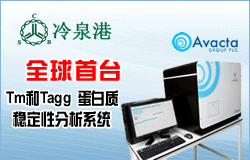按品牌选择
|
||||||||||||||||||||||||||||||
| [发表评论] [本类其他产品] [本类其他供应商] [收藏] | ||||||||||||||||||||||||||||||
| 销售商: 广州瑞博奥生物科技有限公司 | 查看该公司所有产品 >> |
Introduction
Application Data/Notes
Storage/Stability
Recent technological advances by RayBiotech have enabled the largest commercially available glycosylation antibody array to date. With the Human Glycosylation Array 1000, researchers can now efficiently obtain glycosylation profiles in their samples. The glycosylation profiles of 1000 human proteins can be simultaneously detected, including, but not limited to, cytokines, chemokines, adipokines, growth factors, angiogenic factors, proteases, soluble receptors, soluble adhesion molecules in cell culture supernatants, serum, plasma and other samples types.
Capture antibodies are printed onto glass slides and the glycans on these capture antibodies are removed. The glass slide arrays come pre-blocked and are ready to be incubated with samples. After incubation with samples and washing to remove unbound proteins, five unique biotin-labeled lectins are incubated with the array to allow binding to the glycans from captured target proteins. Streptavidin-conjugated fluorescent dye (Cy3 equivalent) is then added to the array. Finally, the glass slide is dried and laser fluorescence scanning is used to visualize the signals. These signals are then compared to the array map to identify glycosylated proteins present in the samples.
Product Features
Capture antibodies are printed onto glass slides and the glycans on these capture antibodies are removed. The glass slide arrays come pre-blocked and are ready to be incubated with samples. After incubation with samples and washing to remove unbound proteins, five unique biotin-labeled lectins are incubated with the array to allow binding to the glycans from captured target proteins. Streptavidin-conjugated fluorescent dye (Cy3 equivalent) is then added to the array. Finally, the glass slide is dried and laser fluorescence scanning is used to visualize the signals. These signals are then compared to the array map to identify glycosylated proteins present in the samples.
- High density screening
- High sensitivity and specificity
- Low sample volume (20-100 µl per array)
- Large dynamic range of detection
- Compatible with most sample types
- Accurate and reproducible
| Biotin-Labeled Lectin Mixture | ||
|
Lectin Name |
Sugar specificity |
|
|
1 |
Concanavalin A |
αMan, αGlc |
|
2 |
Dolichos Biflorus Agglutinin |
αGalNAc |
|
3 |
Peanut Agglutinin |
Galβ3GalNAc |
|
4 |
Ulex Europaeus Lectin 1 |
αFuc |
|
5 |
Wheat Germ Agglutinin |
GlcNAc |
Upon receipt, all components of the Human Glycosylation Array 1000 kit should be stored at -20°C. Once thawed, the glass slide and Cy3 equivalent dye-conjugated Streptavidin should be kept at –20°C and all other components may be stored at 4°C. The entire kit should be used within 6 months of purchase.
Array/ELISA Format
Copyright(C) 1998-2025 生物器材网 电话:021-64166852;13621656896 E-mail:info@bio-equip.com





